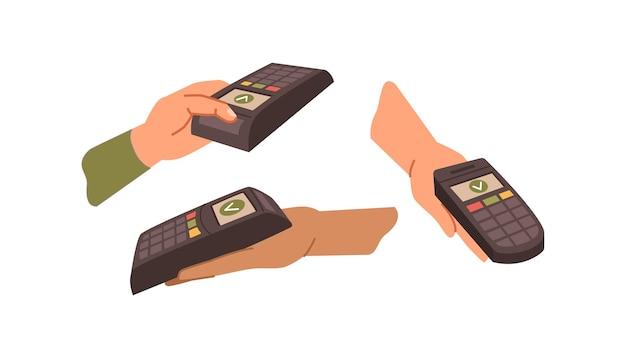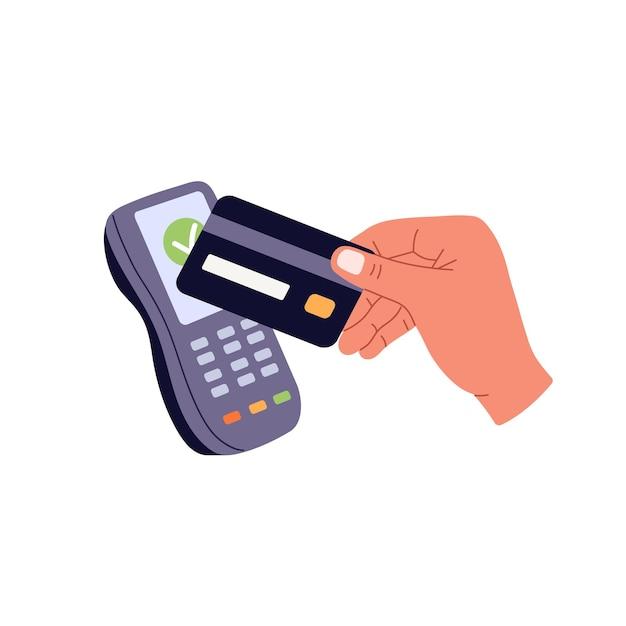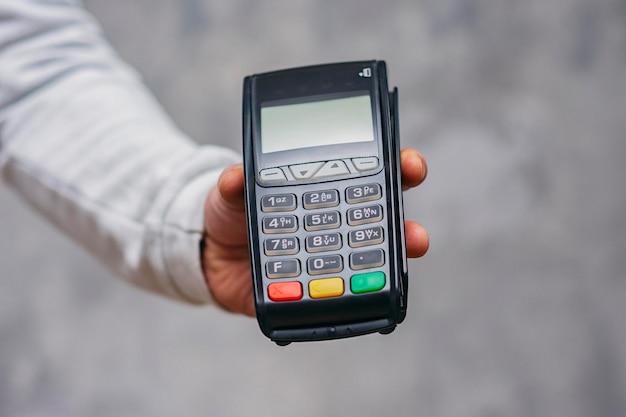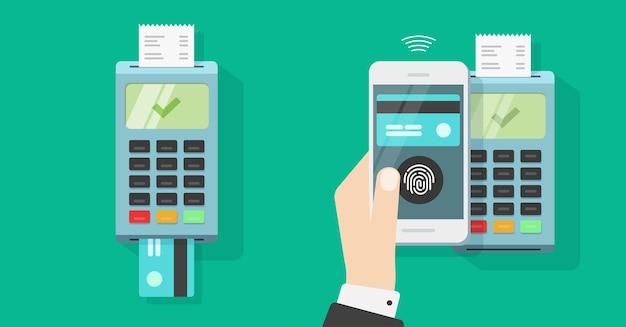In recent years, the term “cashless” has become increasingly popular, especially in the world of Point of Sale (POS) systems. It’s no surprise that businesses are seeking more convenient and secure ways to accept payments, and cashless options are seemingly the way to go. But what exactly does “cashless” mean in this context?
Simply put, a cashless POS system is a payment system that doesn’t require physical cash to complete transactions. It’s a form of payment that utilizes digital or electronic methods, such as credit cards, mobile payments, or online bank transfers, to transfer funds from a customer’s account to a merchant’s account.
The rise of cashless transactions has changed the way we pay for goods and services. Instead of fumbling for cash or counting out coins, customers can now make payments with a swipe or a tap of their mobile device. Going cashless definitely has its advantages, such as being quicker and more convenient. However, there are also several disadvantages to consider, including potential security issues, financial exclusion, and lack of privacy.
In this blog post, we’ll explore the ins and outs of cashless POS systems, their advantages, and disadvantages to help you make informed decisions about whether this system is the right fit for your business. So, buckle up and get ready to dive into the world of cashless payments with us!
The Benefits of Adopting a Cashless POS System
Are you tired of the hassle that comes with using cash as a payment method? Have you considered a cashless point-of-sale (POS) system? In this subsection, we’ll discuss some of the benefits of adopting a cashless POS system, including security, convenience, and efficiency.
Enhanced Security
A cashless POS system eliminates the need for cash handling, reducing the risk of theft or loss. With cashless payments, all transactions are automatically recorded in real-time, so business owners can always keep track of their finances. In addition, many cashless payment methods, such as mobile payments and chip cards, come with advanced security features that make it virtually impossible for hackers to steal cardholder data.
Convenience
Cashless payments are fast, convenient, and hassle-free. Customers no longer need to rummage through their wallets looking for cash or coins, and merchants no longer need to worry about making change. A cashless POS system also eliminates the need to queue up at an ATM, saving customers time and reducing wait times.
Increased Efficiency
Adopting a cashless POS system can also lead to increased efficiency. Gone are the days of manually counting cash and reconciling your cash register at the end of the day. A cashless POS system automatically tracks your sales and generates reports, saving you time and increasing accuracy. Plus, with cashless payments, you’ll no longer need to make frequent trips to the bank to deposit cash.
A cashless POS system can provide a range of benefits for both merchants and consumers, including increased security, convenience, and efficiency. Whether you run a small business or a large enterprise, it’s worth exploring the different cashless payment options available to you. By adopting a cashless POS system, you can streamline your operations and provide a better customer experience.
Is POS Cashless
In recent years, the proliferation of electronic payment systems and digital currencies has brought about changes in how businesses process transactions. POS systems have traditionally been associated with cash transactions, but these days, POS systems have gone cashless. So what does this mean for businesses and customers?
Understanding POS Systems
POS stands for Point-of-Sale, the place where a transaction is completed. A POS system is an integrated hardware and software package that enables businesses to accept payments from customers. Traditional POS systems were used for cash transactions, but modern POS systems can handle all sorts of payment options, including credit/debit cards, mobile payments, and digital currencies.
The Rise of Cashless POS Systems
Cashless POS systems are becoming increasingly popular due to the convenience and security they offer. With cashless payment options, customers don’t have to carry cash, which reduces the risk of theft or loss. At the same time, cashless payment options are faster, which speeds up the checkout process, leading to improved customer satisfaction.
Benefits of Cashless POS Systems
Cashless POS systems have a multitude of benefits for businesses. With cashless transactions, businesses don’t have to handle or store cash, which reduces the risk of theft. At the same time, cashless transactions help reduce the waiting time for customers, leading to fewer abandoned sales and greater customer satisfaction.
Another key benefit of cashless POS systems is that they allow businesses to accept payments from customers who don’t have cash. This is especially important in an increasingly cashless society, where more and more people are using credit/debit cards, mobile payments, or digital currencies.
In conclusion, POS systems are going cashless as businesses adapt to the changing payment landscape. Cashless POS systems offer a plethora of benefits for businesses, including improved security, faster transactions, and the ability to accept different payment options. At the same time, customers benefit from the convenience and flexibility of cashless transactions, as they don’t have to handle cash and can pay with their preferred method. Overall, cashless POS systems are poised to become the norm in retail, hospitality, and other industries as they improve the payment experience for both businesses and customers.
What Do You Mean By Cashless
In our current age of technological advancement, cashless transactions have become quite popular. However, the term “cashless” can be somewhat confusing to those who are used to carrying around money in cash. So, what exactly do we mean by cashless?
Definition of Cashless
Simply put, cashless refers to any type of transaction that does not involve the exchange of physical currency. Rather than paying in cash, an individual can use a debit or credit card, mobile payment options, QR codes, or other electronic transfer methods to make purchases or transfer money.
Advantages of Cashless Payments
One of the primary advantages of cashless payments is convenience. With a cashless system, you can make transactions at any time, anywhere, without the need to carry around physical notes or coins. Additionally, it is much easier to keep track of your spending when using digital payments.
Another advantage is the increased security. When you use digital payments, there is no risk of someone stealing your physical money. You can also easily track your transactions and keep a record.
Types of Cashless Payment Methods
There are numerous methods of cashless payments available today, including contactless technology, mobile wallets, and digital banks.
Contactless payments, such as credit and debit cards, include a chip or NFC technology that communicates wirelessly with a card reader. Mobile wallets, on the other hand, allow you to use your phone as a payment method. Digital banks, such as PayPal and Venmo, facilitate the transfer of money between accounts without the need for physical currency.
In conclusion, the term ‘cashless’ refers to any transaction that does not involve the use of physical currency. With the increased use of technology, cashless payments have become the preferred method of payment for most individuals. They offer numerous advantages, such as convenience, security, and ease of tracking and record-keeping. There are many types of cashless payment methods available today, each with its own unique features.
What is a Cashless Payment System
In today’s world, cashless payment systems have become more popular than ever before. These systems allow customers to conduct daily transactions without the need for cash. With the rise of technology, such systems have become increasingly convenient, reliable, and secure.
How Does a Cashless Payment System Work
A cashless payment system enables people to transfer funds electronically. This means that money is transferred from one account to another in real-time. Some popular cashless payment options include mobile wallets, credit cards, debit cards, and online payment platforms like PayPal.
The Advantages of Cashless Payment Systems
Cashless payment systems offer numerous advantages over traditional cash transactions. These include:
Convenience
Customers can make transactions anytime, anywhere, with a smartphone or a card. There’s no need to carry cash around or worry about change.
Security
With cashless payment systems, transactions are secure, and it is effortless to track payments. You can quickly get a record of your transactions, making it easier to track your expenses.
Time-saving
Cashless payment systems are faster and more efficient than cash transactions. There’s no need to count cash, nor do you have to wait for change.
Increased Sales
Cashless payment systems have been shown to increase sales for businesses. Customers are more likely to make a purchase if they know they can pay with their preferred method.
The Disadvantages of Cashless Payment Systems
Despite numerous advantages, cashless payment systems also have some disadvantages. These include:
Digital Dependence
Cashless payment systems require devices like smartphones, cards, or computers to work. It can be tough for people who don’t have access to these devices.
Security Concerns
With an increase in cashless payment systems, there is also an increase in fraud and identity theft. Customers’ personal information stored on these devices can be at risk of being hacked.
Technical Glitches
Technical glitches are common with cashless payment systems. It can be frustrating for customers when transactions fail, or their account gets blocked.
In conclusion, cashless payment systems are an excellent way to save time, simplify transactions, and increase sales. They are also convenient, secure, and efficient. However, it is essential to consider the disadvantages before fully embracing these payment systems.
What Does It Mean to Go Cashless
With the rise of technology and the ease of online and mobile payments, going cashless has become more popular than ever. But what does it really mean to go cashless?
No More Physical Currency
Going cashless means goodbye to physical currency, including cash and coins. Instead, people use digital payments to make purchases, including credit/debit cards, mobile payments, and online payments. This means no more fumbling through wallets or purses for the right amount of cash or worrying about losing money.
Convenient and Quick
Going cashless offers a level of convenience that’s unrivaled by traditional payment methods. You don’t have to worry about carrying around large sums of money or having enough change for purchases. With just a swipe, tap, or click, you can complete your payment quickly and smoothly.
Secure and Safe
Digital payments often come with increased security features, such as encryption and fraud protection, making them much safer than carrying around physical currency. Plus, if anything were to happen, you can easily cancel a credit/debit card and not lose any money compared to losing cash.
Environmental Benefits
Going cashless offers environmental benefits. The production and disposal of paper currency harm the environment. When people go cashless, paper currency is used less, resulting in the reduction of greenhouse gas emissions and waste production.
Change in Spending Habits
Going cashless can also change spending habits, especially when using mobile payment apps. Most of these apps track your spending, monitor your transaction history, and send push notifications and alerts. With this, people can monitor their expenses and avoid unnecessary spending.
In conclusion, going cashless means moving away from physical currency and towards digital payments, which are quick, convenient, safe, and environmentally friendly. With the advantages of going cashless, it’s no wonder that digital payments are quickly becoming the preferred payment method among consumers everywhere.
Cashless Payments: What are the Disadvantages
Cashless payments have gained immense popularity in recent years. However, there are some downsides to using cashless payment systems. In this section, we will explore these disadvantages.
1. Security Concerns
One of the main disadvantages of cashless payments is that they are vulnerable to hacking, cyber-attacks, and fraud. Hackers can steal personal and financial information, such as credit card details, and use it for nefarious purposes. This type of security breach can lead to identity theft, financial loss, and other serious consequences.
2. Technical Issues
Cashless payment systems depend on technology, such as software and hardware, to function properly. If there are technical glitches, errors, or malfunctions, customers may face issues while making payments. This could lead to inconvenience, frustration, and may even result in lost revenue for businesses.
3. Exclusion of the Unbanked Population
Despite its growing popularity, not everyone has access to cashless payment systems. The unbanked population, which includes individuals who don’t have a bank account or credit card, cannot use cashless payment options. This exclusion could lead to financial inequality and may further marginalize this already disadvantaged population.
4. No Tangible Value
Cashless payments are intangible, which means that customers don’t physically see the money being exchanged. For some people, this lack of tangibility can make it harder to track their spending and budget properly. Additionally, customers may feel disconnected from their money and have less control over their finances.
5. Additional Fees
Some cashless payment systems charge fees for transactions, which can add up over time. These fees can be in the form of convenience charges or transaction fees. For small businesses, these fees can have a significant impact on their overall revenue and profitability.
In conclusion, while cashless payments offer numerous benefits, it’s essential to recognize the potential downsides as well. As with any new technology, it’s important to weigh the advantages and disadvantages and consider the potential risks before adopting a cashless payment system.



